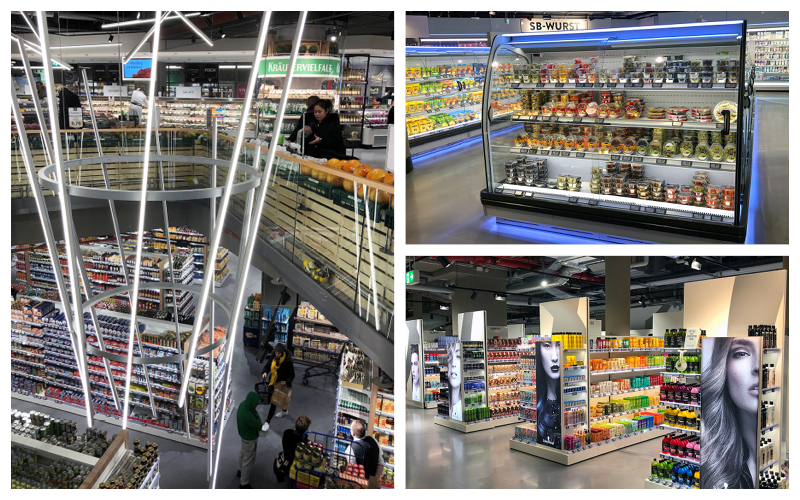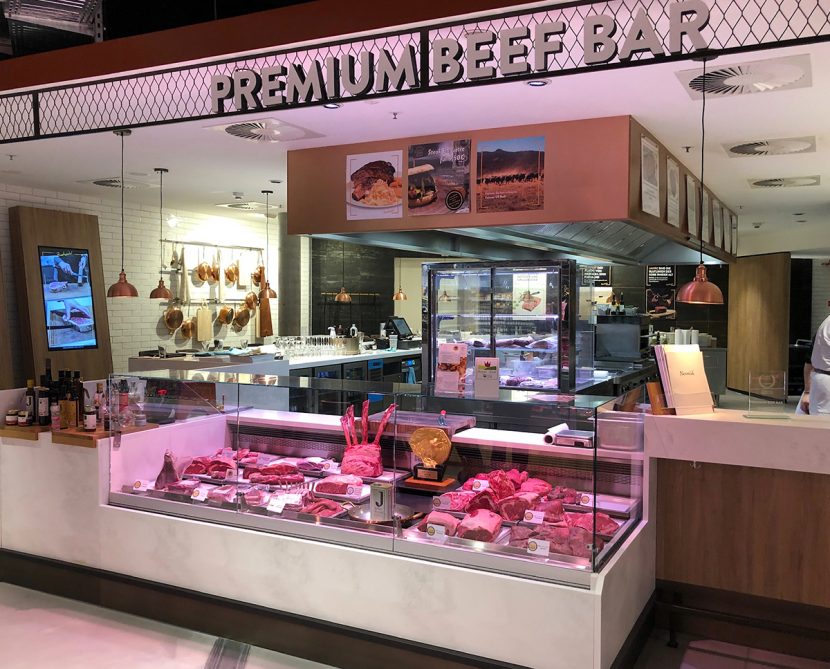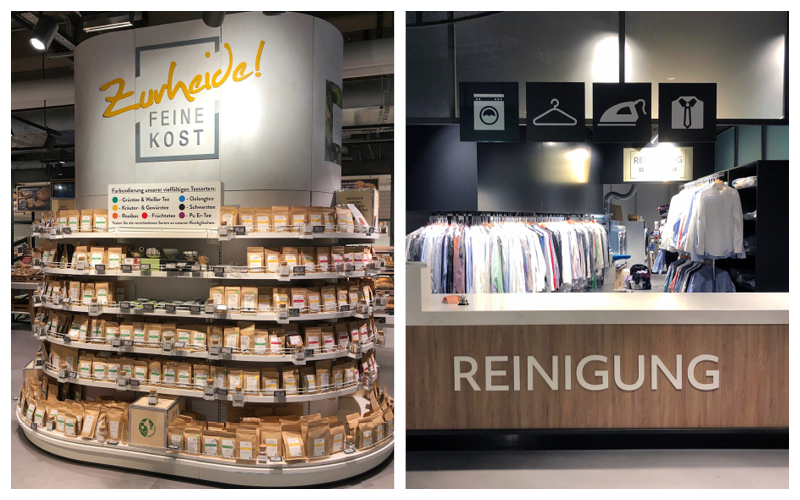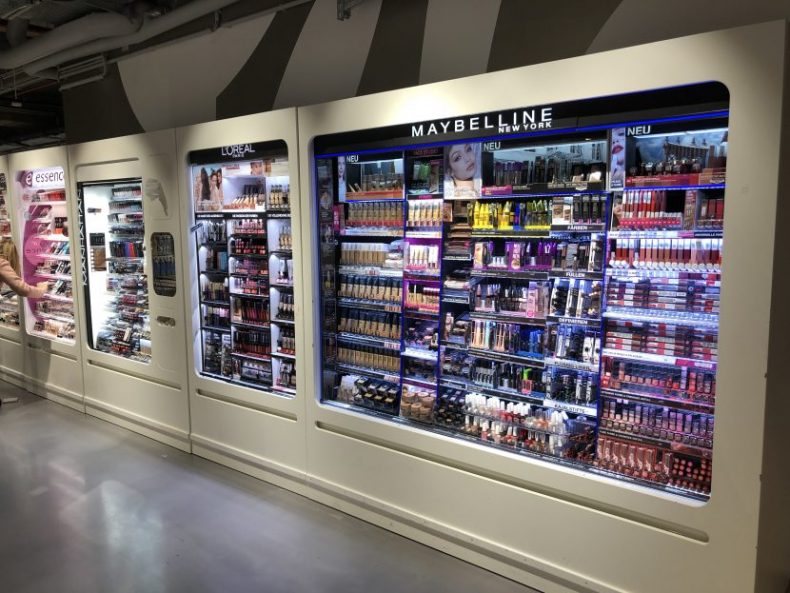901 Marquette
On The Horizon: Airport Trends of the Future
As the world continues to rapidly shift in the wake of the pandemic, the travel industry has a unique opportunity to leverage this lull to reimagine the passenger experience. Not only to create resilient environments that provide guests with confidence and control, but offer travelers a compelling experience that’s as memorable and engaging as their final destination. From the retail offerings, to unique, differentiated amenities, an airport that distinguishes itself from the rest will have a competitive edge for years to come.
#1: Authentically Local
Consumers are traveling with a desire to experience cultures different from their own. Airports have the opportunity to use this desire to their advantage and offer unique experiences that immerse travelers in the locale, both at arrival and departure. Going beyond simple aesthetics, airports should find ways to offer meaningful community support or partnerships to create a sense of place and cultural appreciation. Set the bar high with exclusive experiences that set the tone for their travels, and leave visitors craving more.
[ngg src=”galleries” ids=”21″ exclusions=”125,126,129,130,133,135,137″ display=”basic_imagebrowser”]
Far Horizon:
World cultures integrate themselves into the airports
- GLOBAL PORTALS: Gates develop augmented reality windows that act as “portals” to the destination. Travelers can interact with people at their destination and vice versa.
- LOCALIZED FARE: Chain restaurants are replaced by concepts that bring the local flair into the traditionally homogenized airport environment.
- EXPERIENCE CULTURE: Rentable pods within the airport are available to travelers that immerse themselves in the culture of various destinations, e.g. karaoke pods to help represent Japanese karaoke culture.
#2: Creating an Ecosystem
Airports must evolve to become more self-sufficient environments that enable travelers to have more control over their experiences. As expectations of service and amenities have accelerated during the pandemic, airports of the future must become more convenient, functional, and efficient developments to meet consumer demands. Unlike struggling malls, airports have a constant source of captive traffic, so the focus will shift from making money from airlines, to making money from the passengers in terms of commercial revenue, through more service-based offerings.
[ngg src=”galleries” ids=”22″ display=”basic_imagebrowser”]
Far Horizon:
Airports and the areas surrounding them become self-contained cities
- PACK LESS: Consumers no longer pack for their trips as they rent clothing from sources like Rent The Runway and pick up their options in the airport upon arrival.
- MOBILE EATS: UberEats or similar partnerships allow for mobile food orders to be delivered to locations within the airport or set for pick up at a gate before or after a flight.
- SERVICE BOOM: Elevated amenities that have become a commonplace during COVID-19 like food delivery, meal kit pickups, or streaming on-demand fitness become expected airport offerings.
#3: Elevated Experiences
Many travelers will embrace the ‘Travel Less, Travel Better’ mantra in the coming months and years, being more discerning with their plans while looking for opportunities to upgrade the experience. From business travelers to jet-setting millennials, airports can appeal to this need by offering exclusive amenities that cater to this growing market looking for premium, private, or unique perks.
[ngg src=”galleries” ids=”23″ display=”basic_imagebrowser”]
Far Horizon:
Travel may be less frequent, but guests will look for premium offerings
- CONVENIENT COLLECTING: Gate pods will deliver items such as toiletries, food, or other necessities so travelers don’t need to carry them or include in their carry-on bag.
- THE NEW VIP: As the areas around airports develop with restaurants and entertainment options, services derived from hospitality spaces will become more common – including expedited transportation packages for users with security clearance from restaurant/hotel–to–gate.
- PREMIUM PRIVACY: Business and luxury travelers will look for more private spaces to relax and recharge away from the crowds – think nap pods, exclusive lounges, and private spa offerings.
#4: Holistic Health
WELL-certified environments have grown increasingly popular in recent years and that desire will only accelerate post-pandemic. Travelers will be looking for both visual and non-visual cues that an airport is fresh, clean, and safe. Providing more spaces that encourage holistic wellness will go a long way in strengthening guest confidence. From indoor gardens, to rooftop lounges, to private meditation rooms, airports will need to cater to stressed travelers looking for an opportunity to relax and recharge in a safe environment.
[ngg src=”galleries” ids=”24″ display=”basic_imagebrowser”]
Far Horizon:
Emerging wellness trends become mainstream and easily accessible
- THE GREAT OUTDOORS: Secure, outdoor space will become an expected offering for passengers – from outdoor dining facilities to public rooftop pavilions.
- ELEVATED TRACKS: Indoor tracks that are elevated above the terminal are accessible to those who want to exercise without being confined.
- SENSORY FITNESS: Immersive rooms can be rented out and change in theme to leave the user feeling transported and provide additional health benefits.
#5: Adaptive Environments
As touchscreen technology continues to decline, travelers will rely on their mobile devices to help navigate their journeys. This provides an excellent opportunity for airports to become the true curators of the passenger experience. From check-in, to dining, to entertainment, airports can utilize adaptive technology with inputs from mobile devices to make the experience more relevant and meaningful. The ability to create dynamic experiences through environments that adapt to consumer mood, flight schedule, location, and even weather, will be a true differentiator.
[ngg src=”galleries” ids=”25″ display=”basic_imagebrowser”]
Far Horizon:
Customers regain control of each step in their travel experience
- FLEXIBLE FURNITURE: Gates have flexible seating that changes based on the type of traveler coming through – conversational layouts for families or individual seating for solo travelers.
- PERSONALIZED ENVIRONMENTS: Consumers have the ability change their own environments in seating locations including the heat, airflow, and even aromatherapy scent.
- THEMED ZONES: Gates and terminals develop themes through lighting, seating styles, and digital graphics that adapt to the time of day, season, and flight destinations.
#6 Cultural Influencers
From sustainability initiatives to social movements, airports have a unique opportunity to be part of the conversation. Leveraging a captive audience and an expansive platform will fuel partnerships with private brands, local government, or even non-profits to bring a unique environment and message to life. These temporary activations not only create an exclusive destination but can also be an opportunity for new revenue streams, premium experiences, and PR buzz.
[ngg src=”galleries” ids=”26″ display=”basic_imagebrowser”]
Far Horizon:
Becoming a more socially-minded platform
- BRANDED EXPERIENCE: Gates or terminals have brand sponsors, creating unique environments that celebrate their product or service, relevant to travelers.
- TARGETED FUNDRAISING: National agencies like the National Park Service provide unique activations within applicable airports that can bring awareness or funds to their cause.
- SOCIAL VOICE: Messaging in support of various social causes will be implemented within airports giving these initiatives a more global stage.
Men’s Wearhouse
Rockwell Collins
Kumho Tires Headquarters
Edeka Zurheide: The Next Level Supermarket
EDEKA Zurheide, a 100,000-SF store, family-owned supermarket with amazing experiences throughout is taking the traditional supermarket to new heights. Through a variety of food and service activations, the store is bringing many of the trends we are seeing in grocery and food retail to the floor. While in Dusseldorf for EuroShop 2020, we toured the supermarket in amazement. Keep reading for an exclusive look inside!

Opening in 2018, EDEKA has proven itself to be a great example of a flagship store. Stretching over two floors, thousands of products are perfectly organized and displayed creating a space that turns grocery shopping into a culinary adventure that encourages discovery of new food and lifestyle goods. From freshly made pasta to a live growing lab, EDEKA has something to offer for every aspect of life or everyone in the family. In addition to being a supercharged supermarket, the store doubles as a restaurant, culinary events venue, and even a full-blown food festival.

We could spend hours exploring EDEKA. We were not only mesmerized by the variety of products available but impressed by the level of sophistication and elevation that was taken into consideration for its design. Displaying a certain level of hyper-organization, colorful mountains of produce followed by aisles of *sparkling* refrigerator systems and a full stock of home/beauty/lifestyle supplies can be found here. Each area of the store is more exciting than the last making shopping at EDEKA a thrill for someone whether they enjoy grocery shopping or not.
A few of our favorite experiences found inside the store were the Smoothie Bar, Mozzarella Bar, and Dry-Cleaning Drop-Off station. We loved seeing these everyday services brought together in a unique environment making this supermarket a one-stop-shop for all your food and home needs.


Curious to see what else we explored while at EuroShop 2020? Click here for key takeaways and more coverage!
i + s: NELSON gives existing office building upgrades that attract tenants
NELSON Worldwide creates a modern aesthetic and upgrades public spaces the 600 Metropoint office building in Minneapolis. Here’s how they did it on a budget. Read more with i + s here.
hospitality.net: Fort Lauderdale’s Pier Sixty-Six Resort Set to Debut a Transformative and Sophisticated Identity
Glossy: Shop-in-shops are everywhere — here’s what it means for stores
“What’s important is to honor the essential elements that each party brings to the table. What are those iconic assets that you just don’t mess with? Those can be font treatments, they can be illustrative opportunities, they can be color — those are the red threads that will bring in that symbiotic relationship and cohesiveness.” – Bevan Bloemendaal
Teammate and Chief Brand and Creative Officer Bevan Bloemendaal discusses brand continuity in shop-in-shop partnerships. Read more with Glossy here.
Hotel Management: NELSON Worldwide, DDI merge
Architecture, design and strategy firm NELSON Worldwide has merged operations with Daroff Design Inc + DDI Architects, an interior design and architecture firm headquartered in Philadelphia’s Center City neighborhood. With almost 50 years of history as a certified Woman Business Enterprise, DDI joins the NELSON team with shared values. Read more with Hotel Management here.